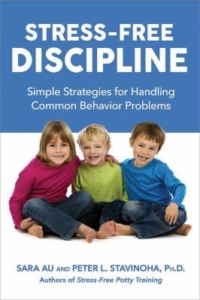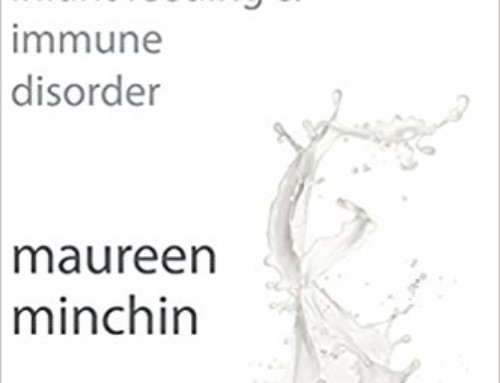 I was sent a copy of this book by a publicist. I was interested in it because anytime there’s a good discipline book, I like to know as it’s an area most parents struggle with. At times, finding gentle discipline in the mainstream can seem less likely than finding a four-leaf clover. The book was touted as having more to it than punishment, focusing on why children behave as they do, what’s normal, and so on. As mentioned in the blurb sent to me, the books will help parents “cultivate a positive parent-child relationship”. Sounded great.
I was sent a copy of this book by a publicist. I was interested in it because anytime there’s a good discipline book, I like to know as it’s an area most parents struggle with. At times, finding gentle discipline in the mainstream can seem less likely than finding a four-leaf clover. The book was touted as having more to it than punishment, focusing on why children behave as they do, what’s normal, and so on. As mentioned in the blurb sent to me, the books will help parents “cultivate a positive parent-child relationship”. Sounded great.
Upon getting my copy, I went through it briefly and ended up writing the publicist back to inform her that I could not give a good review to this book and asked if she wanted me to continue with a formal review (given the time it takes to go through in detail and write up, I prefer focusing on good books). Much to her credit, she told me to go ahead and review it anyway. So here we are.
You are likely wondering what is so bad about this book that made me question whether to review it or not. I will say it’s not horrible – I’ve read far, far worse. In fact, there are actually good elements and pieces of information in here for parents to take home. The problem stems from the fact that for every “good” piece of advice, there is an equally “bad” piece and sometimes even information that isn’t even true thrown in. When a book is structured in such a way that there is this conflicting good/bad advice, it makes it (a) all the more difficult for parents to disentangle what is responsive and gentle and what isn’t, and (b) makes the non-gentle more acceptable to most because it’s mixed in with some pretty good tactics. People can believe they are being “gentle” and building positive relationships when they are doing no such thing. That’s a pretty big problem to overcome.
At the start of the book, we see this good/bad issue immediately as the authors discuss why children act out. The good is that they are immediately clear to parents that your child is likely not out to drive you crazy or make you mad, contrary to many “experts” who will tell you how manipulative and evil your child is. The bad is that they then go on to describe children in a rather negative manner, treating them as egocentric jerks, telling parents their children are “self-centered” or that they are simply learning “how to gain leverage”, and so on. This seems to contradict the good message earlier and sets the tone that children aren’t good people and that this type of discipline and intervention is necessary to make them good. Add to it this is one of those times where they also included something incorrect as the authors suggest that children cannot empathize or understand emotions until 3 years of age. As someone whose dissertation focused on emotion recognition and empathy, I can tell you unequivocally this isn’t true. We have tons of studies showing immediate empathy in the form of emotion contagion in newborn infants and by 18 months, children will take another person’s likes and dislikes into account when offering them food or a toy (along with other studies showing emotion recognition and spontaneous empathic behaviour).
This good/bad continues as the authors tell parents to focus on building relationships with their child by spending real time together in a positive way (good) then to use that positive time to make time outs effective as you can isolate the child and make them feel worse by removing the positive relationship (bad). They tell parents to ignore negative behaviour, but not the child (good) then tell parents to disengage from the child when the behaviour is bad by using non-responses that keep the parent and child distant from each other (bad). In terms of transgressions with other children, they emphasize that younger children don’t always appreciate or feel for what they did meaning they can’t really apologize meaningfully (good), but then say “You cannot force someone to feel something, but you can force him or her to say something” (p.55) (bad).
For sleep (an area many parents struggle with), a positive relationship and how a child that feels safe and secure will not struggle with bedtime as much is emphasized (good) then the authors recommend using disengagement and ignoring when the child struggles at bedtime, regardless of the reason (bad). Furthermore, they also advocate the new “pass” method in which children are given one pass to get up during the night and that’s it. If you go pee, you don’t get to get up again to either pee again, get water, deal with a nightmare, and so on. Any child who has any anxiety at all about sleep will suffer greatly with this method, not to mention how young children struggle to understand nuances, and the ones with anxiety are often the ones that struggle more with bedtime and getting up so this becomes a losing situation. One positive was that bedsharing was not treated as the devil, but there were strong cautions about it and the habits that can develop (with a bit of a negative tone to it); however, it was left to the family as to what they are comfortable with.
(I will say that the one chapter where I found predominantly good information was on building resilience, where the focus was allowing your child to fail, being there for them, and supporting them trying again. They were clear that you shouldn’t put your child in a situation to fail and that these situations happen naturally and it’s our job to be “attentive”, not to solve every problem for them. The examples and discussions in this chapter were, I felt, pretty spot on in terms of being responsive without inhibiting your child’s growth.)
At the end of the day, the book reads too much like a behaviourist handbook only with some gentle suggestions sprinkled in to make the rest sound good. With an overall focus on praise, rewards, consequences, and consistency at all costs (this is highly emphasized – there is no room for parents to take situations into account), the emphasis ends up being more on changing children’s behaviour and not cultivating that positive relationship that is promised at the outset. Unless, of course, the positive relationship is based on children doing what the parent wants.
As the authors say in the book, the theme of their advice is “Parent the behaviour, not the intent.” The problem? Intent is everything when we’re trying to build relationships with people. We have to understand our children’s intent to help them achieve it in appropriate ways and to help us respond to them in an appropriate manner. When you take away intent, you lose that connection and the ability to truly help guide your child through the socialization process. Just as we don’t respond to our partners without consideration of their intent, we shouldn’t do the same to our kids. As such, I simply cannot recommend this book to parents despite the bits of good that are in it. The overarching tone is too behaviourist and there is too much punishment, detachment, and non-responsiveness to make the book gentle or helpful in the quest to build positive parent-child relationships.






Wow! Do people really give their children just ‘one pass’ for nighttime wakings? How horrible! What if they had a drink before bed and need a wee, and then have a nightmare? Ugh its inhumane.
I just wanted to throw it out there that the idea of a pass at bedtime can work quite well for older toddlers who are prone to stalling tactics at bedtime!